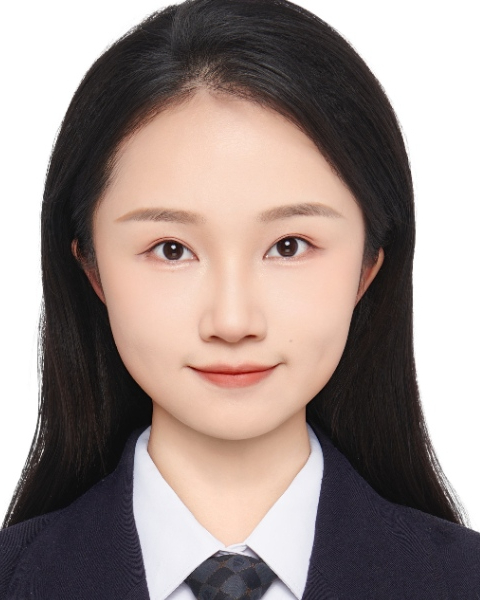PQA 03 - PQA 03 Gynecological Cancer, Pediatric Cancer, and Professional Development Poster Q&A
3589 - Effects of Vertebral-Body-Sparing Proton Craniospinal Irradiation on Spinal Growth and Acute Toxicities in Pediatric Patients Using Pencil Beam Scanning
Monday, September 30, 2024
8:00 AM - 9:00 AM ET
Location: Hall C
Screen: 14

Chuyu Xia, MD
Peking University First Hospital
Beijing, Beijing
Presenter(s)
C. Xia1, S. Zhang2, and X. S. Gao3; 1Department of Radiation Oncology, Pecking University First Hospital, Beijing, China, 2Department of Radiation Oncology, Hebei Yizhou Cancer Hospital, Zhuozhou, China, 3Department of Radiation Oncology, Peking University First Hospital, Beijing, China
Purpose/Objective(s): For skeletally immature children, proton craniospinal irradiation (CSI) is currently delivered to the whole vertebral body to avoid potential spinal abnormalities. Vertebral-body-sparing (VBS) proton CSI is a novel technique that spares the anterior vertebral bodies from the target volume and alleviates spinal growth inhibition. We aim to investigate the early spinal growth outcomes and acute toxicities of children treated with VBS proton craniospinal irradiation utilizing pencil beam scanning (PBS). Materials/
Methods: Seventy pediatric patients receiving VBS proton CSI between January 2019 and December 2022 were retrospectively evaluated. Early axial growth outcomes of forty-three patients were evaluated by magnetic resonance imaging (MRI) scans using Cobb angle calculations and clinical symptoms. All acute toxicity outcomes were evaluated by medical chart review.
Results: Median patient age at treatment was 6 years (range 2–16y), and histologies include 59 medulloblastoma, 2 germ cell tumor, 1 ependymoma, 2 AT/RT, 2 embryonic tumor and remaining 4 constituted other diagnoses. At median follow up of 19.5 months (range 7-45 mo), the overall survival (OS) rate and progression-free survival (PFS) rate were 95.7% and 90.0%, respectively. Among forty-three patients with imaging data, median radiographic follow-up was 14 months (range 5-43 mo) after radiation therapy initiation. The median Cobb angel measured by 2 trained physicians independently with MRI was 4.5° (range 1-8.9°). No patients were clinically diagnosed with scoliosis (Cobb angel>10°) or had experienced chronic back pain. For acute toxicities, 40 (57.1%) patients had grade =3 hematological toxicities; 3 (4.3%) patients had grade =3 gastrointestinal toxicities and 7 (10.0%) patients had any-grade esophagitis during the treatment.
Conclusion: VBS proton CSI with pencil beam scanning may not increase spinal abnormalities in our study and allow for vertebral column growth for children. Patients exhibited great tolerance to the treatment. Long-term growth outcomes and prospective clinical trials are needed in the future.
Purpose/Objective(s): For skeletally immature children, proton craniospinal irradiation (CSI) is currently delivered to the whole vertebral body to avoid potential spinal abnormalities. Vertebral-body-sparing (VBS) proton CSI is a novel technique that spares the anterior vertebral bodies from the target volume and alleviates spinal growth inhibition. We aim to investigate the early spinal growth outcomes and acute toxicities of children treated with VBS proton craniospinal irradiation utilizing pencil beam scanning (PBS). Materials/
Methods: Seventy pediatric patients receiving VBS proton CSI between January 2019 and December 2022 were retrospectively evaluated. Early axial growth outcomes of forty-three patients were evaluated by magnetic resonance imaging (MRI) scans using Cobb angle calculations and clinical symptoms. All acute toxicity outcomes were evaluated by medical chart review.
Results: Median patient age at treatment was 6 years (range 2–16y), and histologies include 59 medulloblastoma, 2 germ cell tumor, 1 ependymoma, 2 AT/RT, 2 embryonic tumor and remaining 4 constituted other diagnoses. At median follow up of 19.5 months (range 7-45 mo), the overall survival (OS) rate and progression-free survival (PFS) rate were 95.7% and 90.0%, respectively. Among forty-three patients with imaging data, median radiographic follow-up was 14 months (range 5-43 mo) after radiation therapy initiation. The median Cobb angel measured by 2 trained physicians independently with MRI was 4.5° (range 1-8.9°). No patients were clinically diagnosed with scoliosis (Cobb angel>10°) or had experienced chronic back pain. For acute toxicities, 40 (57.1%) patients had grade =3 hematological toxicities; 3 (4.3%) patients had grade =3 gastrointestinal toxicities and 7 (10.0%) patients had any-grade esophagitis during the treatment.
Conclusion: VBS proton CSI with pencil beam scanning may not increase spinal abnormalities in our study and allow for vertebral column growth for children. Patients exhibited great tolerance to the treatment. Long-term growth outcomes and prospective clinical trials are needed in the future.
